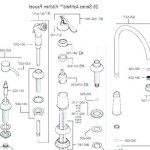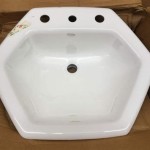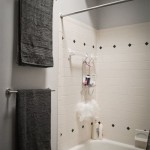How to Clean Mold on Bathroom Walls
Mold growth in bathrooms is a common problem due to the humid environment. Mold not only appears unsightly but can also pose health risks, especially for individuals with allergies or respiratory problems. While prevention is key, if mold has already appeared, it's essential to remove it promptly and effectively. This article outlines a comprehensive guide on how to clean mold on bathroom walls, ensuring a safe and clean environment.
Understanding Mold Growth
Mold thrives in damp, warm environments, making bathrooms a prime location for growth. It thrives on organic materials like wood, drywall, and even grout. The presence of moisture, inadequate ventilation, and poor hygiene contribute to mold infestation. Identifying the underlying cause of mold growth is crucial for preventing future occurrences.
Safety Precautions:
Before tackling mold removal, it's vital to prioritize safety. Mold spores can trigger allergies and respiratory issues. Wear protective gear such as gloves, a mask, and eye protection to minimize exposure. Protect your clothing and ensure good ventilation in the area. If dealing with a large infestation or experiencing health problems, consider professional mold removal services.
Essential Supplies for Mold Removal:
Gather the following supplies to effectively address mold growth on bathroom walls:
- Cleaning solution: A bleach solution is the most effective for killing mold. Mix 1 part bleach with 10 parts water in a spray bottle. Alternatively, use a commercial mold cleaner.
- Spray bottle: For applying the cleaning solution.
- Scrubbing brush: A stiff-bristled brush for scrubbing the mold.
- Microfiber cloth: For wiping away the solution and mold.
- Ventilation: A fan or open window to ensure good air circulation.
- Protective gear: Gloves, mask, and eye protection.
Step-by-Step Mold Removal Process:
Follow these steps to effectively eliminate mold on bathroom walls:
- Prepare the area: Clear the surrounding area of any items that could be damaged by the cleaning solution. Protect adjacent surfaces with plastic sheeting or tape.
- Ventilate the room: Open windows or use a fan to improve ventilation and reduce mold spore exposure.
- Apply the cleaning solution: Spray the bleach solution or mold cleaner directly onto the affected areas. Allow the solution to sit for at least 10 minutes to kill the mold spores.
- Scrub the mold: Use a stiff-bristled brush or a scrub sponge to thoroughly scrub the affected areas. The cleaning solution should help to loosen the mold.
- Rinse and dry: Wipe off the cleaning solution and loose mold with a damp microfiber cloth. Rinse thoroughly with clean water.
- Dry the area: Allow the affected area to air dry completely. Use a fan or dehumidifier to speed up the drying process.
Addressing the Root Cause
Cleaning mold is only a temporary solution. To prevent future growth, address the underlying cause of the moisture problem. This may involve fixing leaking pipes, improving ventilation, ensuring proper sealing around windows and doors, and addressing any water damage.
Alternative Cleaning Methods:
While bleach is a common and effective solution, there are alternative methods for cleaning mold, especially for individuals with sensitivities:
- Baking soda: Make a paste with baking soda and water, apply it to the mold, and scrub. Rinse thoroughly.
- Tea tree oil: Mix a few drops of tea tree oil with water and apply it to the mold. Let it sit for a few minutes before scrubbing and rinsing.
- Vinegar: White vinegar can also help kill mold. Apply undiluted vinegar to the mold and let it sit for 30 minutes before scrubbing and rinsing.
Maintaining a Mold-Free Bathroom:
To prevent future mold growth, follow these preventative measures:
- Proper ventilation: Ensure proper ventilation in your bathroom. Use a fan during and after showers to remove moisture.
- Regular cleaning: Clean your bathroom regularly, especially areas prone to moisture, such as showers, tubs, and sinks. Pay attention to grout lines.
- Promptly address leaks: Fix any leaks in your bathroom immediately. Small leaks can quickly lead to mold growth.
- Dehumidifier: Consider using a dehumidifier in your bathroom to reduce humidity levels.
By following these guidelines, you can effectively clean mold from your bathroom walls and prevent future infestations. Remember to prioritize safety, address the underlying cause of the problem, and maintain a clean and dry bathroom environment.

How To Remove Mold From Walls True Value

How To Get Rid Of Mold In The Shower On Bathroom Walls Clorox

Black Mold In The Shower How To Clean It Kitchen With Matt

How To Get Rid Of Mold In Bathroom 2024 Tips From Puroclean

How Do You Get Rid Of Mould On Bathroom Walls Igloo Surfaces

Bathroom Ceiling Mold Removal When To Clean Call Branch Environmental

Kill Bathroom Mould Without Bleach Electrodry Blogs

How To Clean Mould Off Walls Very Effective And Safe Way Kill Prevent Express Co

How To Clean Mold In Shower Grout Tips And Tricks Certified Care

How To Get Rid Of Mold On Bathroom Walls Family Handyman
Related Posts







